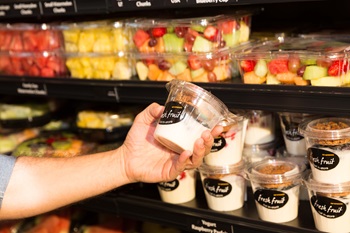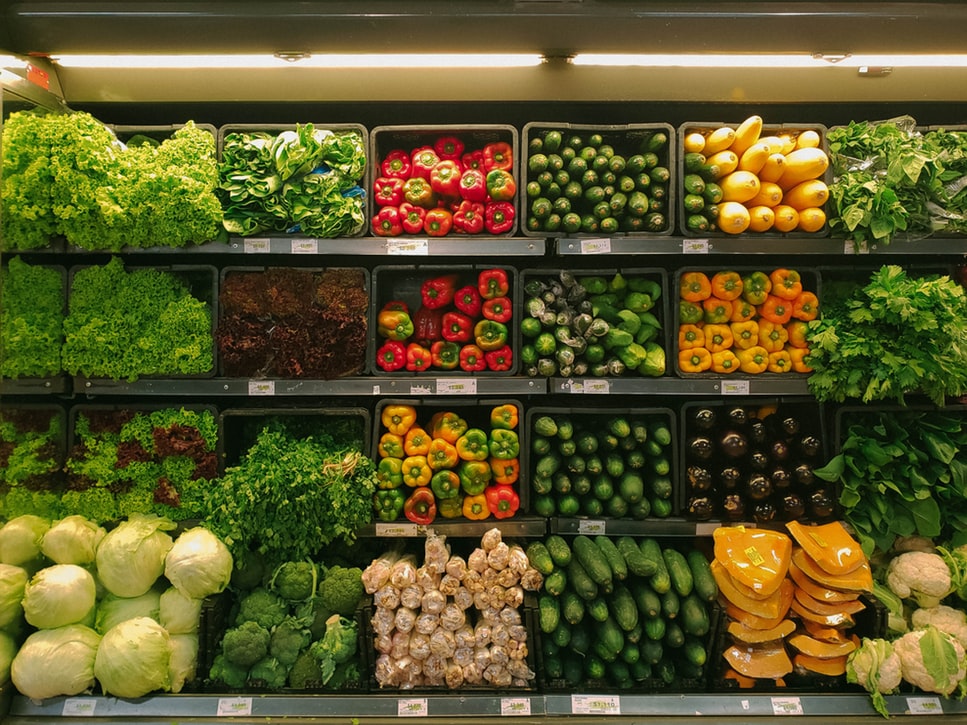By: Rick Stein, Vice President, Fresh Foods, Food Marketing Institute
 With tremendous luck, your March Madness bracket may have withstood some of the surprise upsets and match-ups in the N.C.A.A. basketball tournament this year. Similar to the unpredictable, fast-paced game played on the court, retailers face similar business landscapes when it comes to consumers aligning their purchasing decision with their social and cultural values. How do retailers integrate consumer values into their overall game plan? Well, I like to say, it’s an opportunity for retailers to grab the jump ball.
With tremendous luck, your March Madness bracket may have withstood some of the surprise upsets and match-ups in the N.C.A.A. basketball tournament this year. Similar to the unpredictable, fast-paced game played on the court, retailers face similar business landscapes when it comes to consumers aligning their purchasing decision with their social and cultural values. How do retailers integrate consumer values into their overall game plan? Well, I like to say, it’s an opportunity for retailers to grab the jump ball.
Shoppers use countless sources to learn or research the fresh foods they’re buying. Today, many factors influence a consumer’s purchasing decision when it comes to food. According to U.S. Grocery Shopper Trends 2016, grocery retailers are well positioned as a trusted ally to help their shoppers explore and discover food. Beyond price, what other ways are stores providing information to consumers and influencing customer loyalty? Stores can be a credited resource to shoppers by aligning business operations with shoppers’ social and cultural values.
Reported by 2017 Top Trends in Fresh, last year the top social sentiment drivers for shoppers were seafood sustainability, animal welfare, meat certification, food waste and fair food/wage. Retailers with strong sustainability programs sold more fresh foods. In the seafood category, top rated retailers grew sustainable fish sales two times faster than retailers with weak programs. By recognizing what consumers value in the foods they buy, retailers earn consumer loyalty.
The research also finds no-antibiotic meat and poultry offerings create stronger basket growth for stores. Consumers spend $65 more than the average basket on sustainable meats. Social and cultural alignment can drive faster growth for retailers, and in turn, gain recognition among consumers. As consumers demand more transparent sustainability programs, the need to integrate and adopt these programs will be imperative to food retail business operations.
To learn more about social and cultural alignment in the food retail industry, access FMI and IRI’s Top Trends in Fresh webinar here. This is the second of a five-part webinar series. Other topics include Personalization, Hyperlocalization, and Retail Response.


 Industry Topics address your specific area of expertise with resources, reports, events and more.
Industry Topics address your specific area of expertise with resources, reports, events and more.
 Our Research covers consumer behavior and retail operation benchmarks so you can make informed business decisions.
Our Research covers consumer behavior and retail operation benchmarks so you can make informed business decisions.
 Events and Education including online and in-person help you advance your food retail career.
Events and Education including online and in-person help you advance your food retail career.
 Food Safety training, resources and guidance that help you create a company food safety culture.
Food Safety training, resources and guidance that help you create a company food safety culture.
 Government Affairs work — federal and state — on the latest food industry policy, regulatory and legislative issues.
Government Affairs work — federal and state — on the latest food industry policy, regulatory and legislative issues.
 Get Involved. From industry awards to newsletters and committees, these resources help you take advantage of your membership.
Get Involved. From industry awards to newsletters and committees, these resources help you take advantage of your membership.
 Best practices, guidance documents, infographics, signage and more for the food industry on the COVID-19 pandemic.
Best practices, guidance documents, infographics, signage and more for the food industry on the COVID-19 pandemic.
